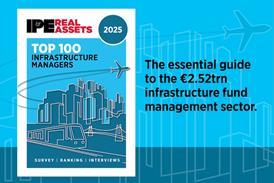MAGAZINE: Dutch developer dynasty powers on

The Van Veggel family is making waves with its European and US businesses in the wake of the Multi Development era. In an interview with PropertyEU, Hans, Bas and Tim van Veggel look back on Multi’s legacy and what it has meant for them personally and their current activities.
You have now reached your article limit
Already have an IPE Real Assets account? Sign in
PropertyEU has merged with IPE Real Assets
If you had a PropertyEU account, simply reset your password to get access to IPE Real Assets.
New users can Register for free today for access to the PropertyEU Archive and IPE Real Assets.
Registration also includes access to IPE

Five reasons to register today
- Access IPE Real Assets articles
- Daily news alerts and updates
- Track what the world’s leading institutional investors are doing
- Learn about the latest industry research and market analysis
- Comprehensive archive of data and intelligence on investors and fund managers, including the PropertyEU Archive




